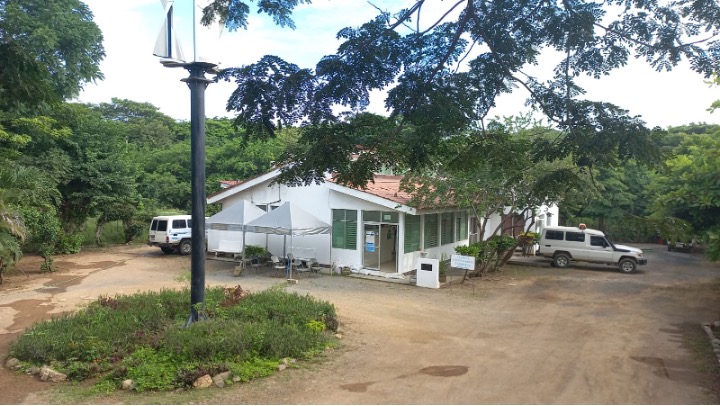How to Create a Portfolio That’s Built to Last
Mark Ford|November 20, 2020

Whenever I talk about wealth building, I make sure to mention “antifragility,” a concept made famous by bestselling author Nassim Taleb.
In a nutshell, antifragility is a strategy of protecting yourself from unanticipated calamities (what Taleb calls “black swans”), while at the same time positioning yourself to take advantage of them.
I developed the first part of my strategy from 2000 to 2010, when I was writing Early to Rise, my daily blog. During those years, I focused on financial assets outside of the stock market – mostly real estate, debt instruments and private enterprise. It accounted for about 50% of my wealth back then and comprises about 85% of it now.
The second part of my strategy concerns stocks, cash and gold. I developed the bulk of it from 2010 to 2016, when I was writing Creating Wealth. It includes, among other things, an unusual approach to owning gold and a unique way of investing in stocks that I call the Legacy Portfolio.
My core principle with respect to wealth building is simple: Get richer every day.
Antifragile Diversification
In the real world, it’s difficult to follow this principle. And it’s virtually impossible to hold true to it if 80% of your net investible assets (NIA) are in stocks and bonds.
In other words, you have to diversify among multiple asset classes.
This is how my NIA breaks down…
Stocks make up 15% of my investible net worth (my net worth minus my residence and possessions I would never sell).
About 3% is in options.
Direct investments in entrepreneurial businesses, although initially shockingly small, now represent about 32% of my net investible wealth.
Pre-IPO deals represent less than 1% of my net investible wealth.
Fixed-income bonds represent about 4%.
My private debt investments are about 5% of my net investible wealth.
Rental real estate represents about 15% of my net investible wealth.
Land banking represents about 5% of my net investible wealth.
Gold and silver coins represent about 4% of my net investible wealth.
Cryptocurrencies are less than 1% of my net investible wealth.
Altogether my collectibles represent about 10% of my investible net worth.
My cash holdings represent about 5% of my net worth.
With this kind of diversification, I believe I have achieved a considerable amount of financial antifragility.
Just Right
I don’t think my portfolio is the ideal portfolio for everyone. I don’t think it’s the best possible example of diversification for people who are younger or older than me, richer or poorer than me, or have more or less tolerance for risk.
But it has done well over the years, and the new additions are doing well, and I think its diversity and balance are just right for me.
Most importantly, it reflects my strongest belief about building wealth: That to have the best result in building wealth, you have to go beyond stocks and bonds.
The income I receive from my NIA is sufficient – more than sufficient – to cover any current or future needs. So I don’t have to worry about running out of money.
If there were an economic collapse, like the one we saw in March, the income from these assets would go down. But it wouldn’t go down anywhere near as much as the stock market could go down.
And if I’m wrong about this, I have that gold. I’ve accumulated enough to take care of my family for years, simply by spending those coins.
So that constitutes a second fallback bunker of safety for me.
And even my stock strategy is antifragile.
The Legacy Portfolio: Big, Profitable Companies Built to Last
I spent the first 10 years of my investing career avoiding stocks entirely.
I had my money mostly in AAA-insured municipal bonds, which, at the time, were generating about 6% tax-free. Six percent tax-free is equivalent to about 9% in taxable investments at my tax bracket. And 9% is close enough to the historical stock market returns that I saw no reason to take a risk for an extra point or two.
As the yield on bonds diminished, I began investing in no-load index funds, which are designed to track the market. They did what they were designed to do.
Then, after I read my first book about Warren Buffett, I decided to create my own personal Berkshire Hathaway by asking two of the best analysts I worked with to build me “the stock portfolio that Warren Buffett would put together if he were starting out today.”
That was in 2011 and 2012. The original portfolio (still the core portfolio) consisted of stock in close to a dozen very large, market-dominating, dividend-giving (and dividend-growing) companies, including American Express, Coca-Cola, Wells Fargo, Nestlé, Becton Dickinson, Kellogg, Procter & Gamble, McDonald’s, 3M, IBM and Chevron.
My goal for the Legacy Portfolio was never – as is the case with most individual investors – to try to dramatically outperform the market. My goal was to keep pace with it, but with less volatility than I might expect from investing in an index fund.
Along the way, I developed a buy/sell strategy that is different from what most value investors do. My goal is not to maximize return on investment (ROI) but to accumulate as many shares of these great companies as I possibly can. So when the market is going down, we don’t sell. We wait until prices meet our target (i.e., they become historically cheap) and buy more. Our criteria are not many. The most important is historical price-to-earnings (P/E) ratios.
Another twist that I put on the Legacy Portfolio is that I don’t reinvest dividends into the companies that issue them. Instead, I ask Dominick, my broker, to accumulate the dividends from all of the stocks and invest them in only a few companies that are the cheapest – i.e., have the most attractive P/E ratios.
Since its “official” (public) inception in 2012, the Legacy Portfolio has performed very well. I have doubled my total investment and achieved an annualized rate of return of 14.5% per year. And I’ve done it with less volatility than the overall market indexes.
So if you ask me what I will do if the market tanks again like we saw earlier this year, the reply will be this: I will stay consistent with my rule. I will not sell. I will buy more.
I have given myself one exception to that rule: If I feel the stock market is overvalued and due for a tumble, I give myself license to take out some of the profits and invest them in another asset class if I can find one that offers me a current ROI equal to or better than the stock market’s.
To sum up all this, I’m not terribly worried about a stock market crash because I feel I’ve done all I can do to create a flexible (antifragile) portfolio of assets.
If and when we do have another crash, I know that I will feel what every other investor will feel. I will feel like selling.
To obviate that, I’m doing a sort of financial meditation. I’m imagining myself looking at the bottom line of my stock account and seeing that is it down by 50%… and realizing that I’m okay with that.
I am then imagining myself calling up Dominick and asking him, “What should we be buying?”
That’s Me. What About You?
That is what I plan to do. But to be fair, I can do this not only because I have a high net worth but because my overall wealth strategy includes all those other asset classes that aren’t necessarily tied to the stock market. Which is to say, it may be easier for me to take the position I’ve taken than it may be for you.
The advice I’d give to anyone right now is this: Forget about trying to beat the market and forget about market timing.
Build a portfolio of 15 to 30 great companies that have a history of giving dividends and that have market advantages that will make it all but certain that they’ll still be big and profitable 20 years from now.
Editor’s Note: Even conservative investors can use options as part of their wealth-building strategy. And in just one trade… once per month… you can take advantage of a simple options strategy that not 1 in 999 traders knows about. Get the details on what Andy’s uncovered here.
What are you doing to make your portfolio antifragile? Tell us about it at mailbag@manwardpress.com.



